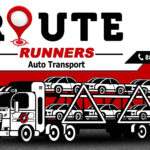Electric vehicles (EVs) are reshaping the way we move through cities. These vehicles offer a cleaner, quieter, and more efficient alternative to traditional gas-powered cars. With urban populations growing, EVs are emerging as a key part of solving transportation challenges and creating sustainable cities. Let’s explore how EVs are influencing urban life and what lies ahead.

Content
Why Electric Vehicles Matter in Cities
Urban areas are hubs of activity, but they face serious issues like traffic congestion, air pollution, and noise. Electric vehicles address these problems in significant ways.
Cleaner Air
Unlike gas-powered cars, EVs don’t produce harmful tailpipe emissions. This reduces air pollution, which is a leading cause of respiratory illnesses in cities. For example, cities like Los Angeles and London are already seeing improvements in air quality thanks to the growing adoption of EVs.
Quieter Streets
EVs operate almost silently compared to traditional vehicles. This helps reduce noise pollution, making cities calmer and more livable. Imagine neighborhoods where you can have a conversation without the constant hum of engines!
Cost Efficiency
Electricity is often cheaper than gasoline, and EVs require less maintenance since they have fewer moving parts. Over time, these savings make EVs a smart choice for urban dwellers. With governments offering incentives, the initial cost of buying an EV is becoming more affordable.
How EVs Are Transforming Urban Travel
EVs aren’t just limited to personal cars. They’re influencing all aspects of urban transportation, from public transit to micro-mobility solutions.
Electric Buses
Many cities are replacing traditional diesel buses with electric ones. Electric buses reduce greenhouse gas emissions, improve air quality, and are quieter on the roads. For instance, Shenzhen in China has transitioned to a fully electric bus fleet, cutting millions of tons of CO₂ emissions annually.
E-Scooters and Bikes
Electric scooters and bikes are revolutionizing short-distance travel. These lightweight, eco-friendly options are perfect for navigating congested city streets. Shared mobility programs, like Lime or Bird, offer easy access to e-scooters and e-bikes, reducing the reliance on cars.
EV Ride-Sharing
Ride-sharing companies like Uber and Lyft are incorporating EVs into their fleets. This move not only lowers emissions but also introduces more people to EV technology. Some services even offer lower fares for riders who choose EV rides.
Delivery Vehicles
Urban delivery services are adopting electric vans and bikes to cut down on emissions. Companies like Amazon and UPS are rolling out EV fleets for last-mile deliveries, helping to create cleaner city environments.
Challenges for EVs in Cities
Despite their benefits, EVs face several hurdles in becoming a dominant force in urban transportation.
Limited Charging Infrastructure
One of the biggest challenges is the lack of charging stations. Urban residents, especially those in apartment buildings, often struggle to find convenient charging options. Cities need to invest in public charging networks to make EVs viable for everyone.
Upfront Costs
Although EV prices are decreasing, they’re still more expensive than traditional cars. Government subsidies and tax incentives can help bridge this gap, but these programs vary by region.
Increased Power Demand
As more people switch to EVs, cities will face a surge in electricity demand. This requires upgrading power grids to prevent outages and ensure reliable service. Renewable energy sources, like solar and wind, will play a critical role in meeting this demand sustainably.
Future Trends in Urban EVs
The future of EVs in cities is exciting, with innovative technologies and policies driving progress.
Autonomous Electric Vehicles
Self-driving electric vehicles are on the horizon. These vehicles promise safer, more efficient travel. For example, autonomous EVs could operate as shared taxis, reducing the need for private car ownership and freeing up space previously used for parking lots.
Wireless Charging Technology
Imagine charging your EV without plugging it in. Wireless charging pads installed on roads and parking spots are being tested in cities like Oslo, Norway. This technology could make charging as simple as parking your car.
Integration with Public Transit
EVs will increasingly work alongside public transportation systems. For instance, electric shuttles can connect commuters to train stations or bus stops, creating a seamless, eco-friendly network.
Vehicle-to-Grid Technology
Advanced EVs will not only consume electricity but also send unused power back to the grid. This helps stabilize energy supply during peak hours and lowers overall electricity costs.
How Cities Can Support EV Growth
For EVs to thrive, cities need to actively support their adoption.
- Expand Charging Infrastructure: Public and private investment in fast and accessible charging stations is crucial. Cities like Amsterdam and New York are setting up thousands of new chargers.
- Introduce EV-Only Zones: Some cities are creating low-emission zones where only EVs can enter. This encourages people to switch to electric options.
- Subsidize EVs and Services: Offering tax breaks, purchase incentives, and discounts for EV-related services can attract more users.
- Promote Shared Mobility: Car-sharing and bike-sharing programs that feature EVs reduce traffic and pollution.
Final Thoughts
Electric vehicles are shaping the future of urban transportation. Their potential to reduce pollution, ease traffic, and provide quieter streets is unmatched. As cities invest in EV infrastructure and adopt forward-thinking policies, the transition to an electric future becomes more achievable.
The journey to cleaner, smarter cities starts with EVs. Their future is bright, and their impact will redefine urban living for generations to come.

Nina dives deep into the auto world, dissecting cars like a seasoned surgeon. Her articles are an automotive library, filled with reviews and industry insights. Join her for an enlightening ride.












